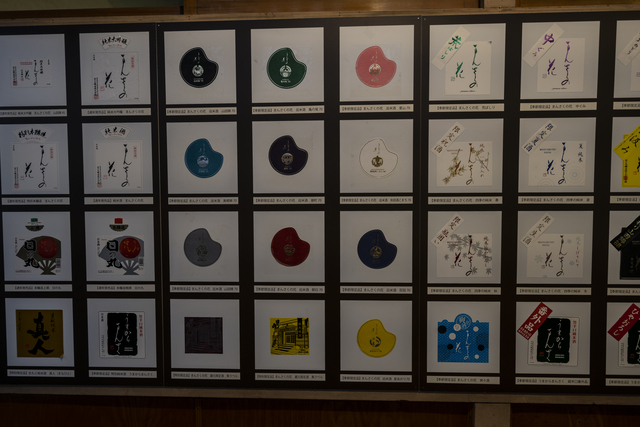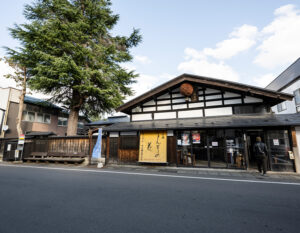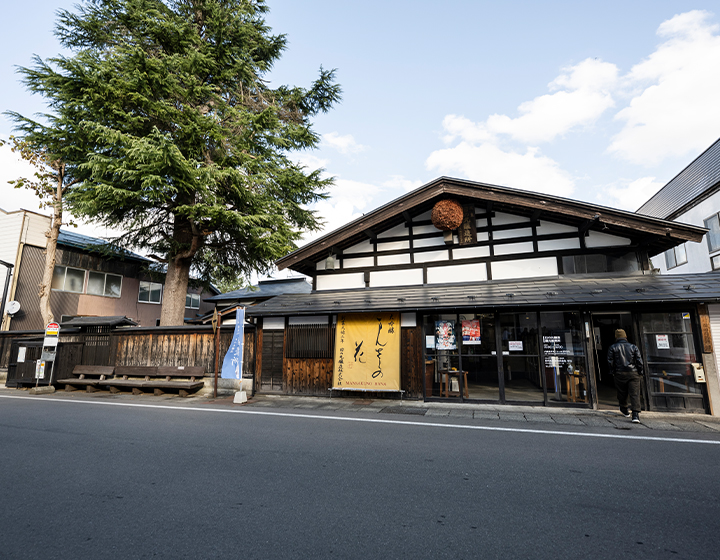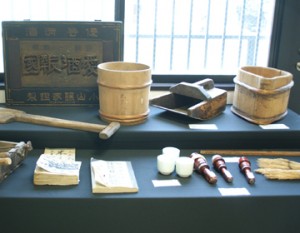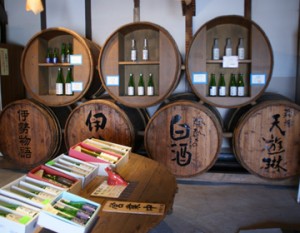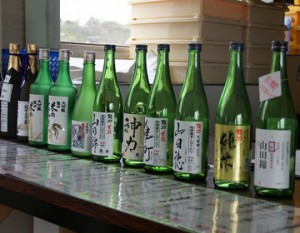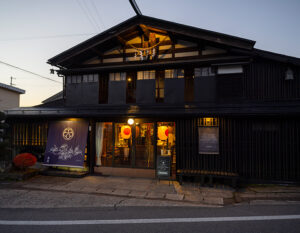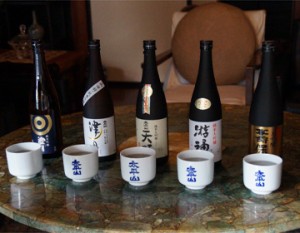Akita’s traditional sake brewery has been in business for over 300 years
Yokote City in Akita Prefecture is the third most heavily snowed area in Japan. The long winter lasts forever under a cloudy sky, and the snow covers the fields, mountains, and towns in a blanket of white. However, deep snow is not only a bad thing. The harsh environment for people also seems to be inhospitable for bacteria, which brings clean, stagnant water to the breweries. Hinomaru Brewery was founded in 1689, the year Matsuo Basho set out on his “Okunohosomichi” (The Narrow Road to the Deep North). The brewery was named “Hinomaru” after the Akita feudal lord Satake, whose crest was “Hinomaru” on a five-pronged fan. In 1943, the brewery was forced to close down due to a wartime business development order, but in 1948, it received permission to increase its basic production volume to 400 koku, reviving a 300-year tradition that continues to this day.
From the street, the Hinomaru Brewery building looks like an ordinary sake brewery, but when you enter the building and pass through a narrow alley-like passageway, you will find a large, solid-looking brewery waiting for you. The name of the brewery is “Gutai,” said Joji Sato, the second-generation head of the brewery after its revival. The town of Masuda in Yokote City has a long history of sericulture and leaf tobacco production since the Edo period (1603-1868), and in the Taisho period (1912-1926), it prospered from the Yoshino Mine. The town’s prosperity also enriched the merchants, who built zashiki warehouses and bunko warehouses in the houses with large lots. In the Hinomaru Brewery’s innards, pillars made of solid material are embedded in the walls. All the pillars are made of Aomori hiba (Aomori cypress), and they go all the way up to the second floor, so they must have cost a lot of money,” said Sato, amazed at the extravagant construction of the warehouses of the time. The extravagant design has a somewhat modern feel to it. The well-balanced combination of the old and the new seems to represent the sake of Hinomaru Brewery.
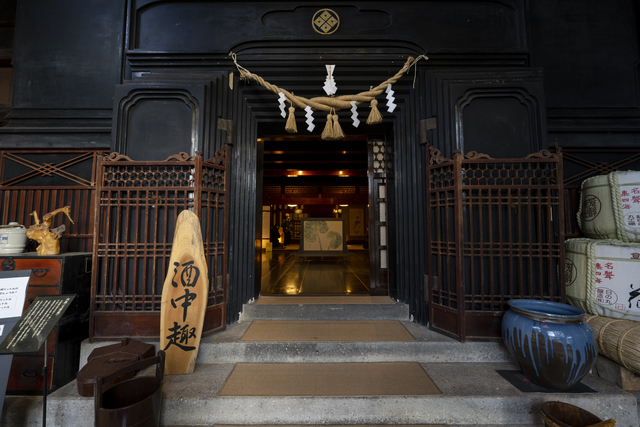

Hinomaru Brewing” is the result of the needs and thoughts of the brewery’s employees.
Hinomaru Brewery offers more than 60 varieties of sake, including its core brand, “Manzaku no Hana. Mansaku no Hana” is the title of an NHK TV series that was broadcast in Yokote City, Akita Prefecture, in 1981, and is also the name of a flower. The name was given by the first generation of the family. As in the drama, “Hinomaru,” which had been the main brand up to that point, was kept as the main local brand, and the brand for the Tokyo metropolitan area was divided into two separate brands as “Manzaku no Hana” (flower of flowers). Currently, 90% of the company’s sales are accounted for by “Mansaku no Hana.
With a wry smile, the company’s eldest son, Managing Director Koji Sato, explains the increase in the number of items . Of course, the increase was not merely in the number of labels. Sixteen types of rice are used, including Akita Sake Komachi, Kame-no-o, Gin-no-Sei, and Yamada-Nishiki. In addition, there are 16 types of yeast and 10 types of koji, so in order to produce many variations, the number of ingredients is also large. The small-lot production also creates diversity within the “Mansaku no Hana” series, with the “Junmai Daiginjo” releasing a full fragrance, and the “Junmai” carefully fermented at a low temperature, balancing acidity and spiciness and delivering a beautiful sensation down the throat. The sake brewer, a long-established brewery with a history of more than 300 years, must have had deep feelings for “local sake” while pursuing new sake to be enjoyed by sake lovers across the country. It is one of the pleasures allowed to sake connoisseurs to be able to drink up the sake with the story of the brewery and the flavors that have been painstakingly created by changing the methods and tastes of each sake. On the other hand, one thing that has remained unchanged over the past 300 years is the belief that no amount of ingenuity will work unless the ingredients used to make the sake are good. With this philosophy in mind, Hinomaru Brewery continues to brew sake for the enjoyment of many people today, using high-quality underground water from the Ou mountain range and sake rice grown with great care by contract farmers. Hinomaru Brewery’s sake can be purchased at the brewery’s direct sales office or online, and tours of the brewery are also available.
